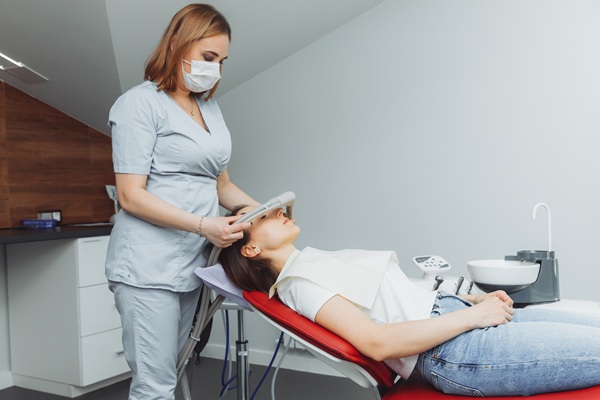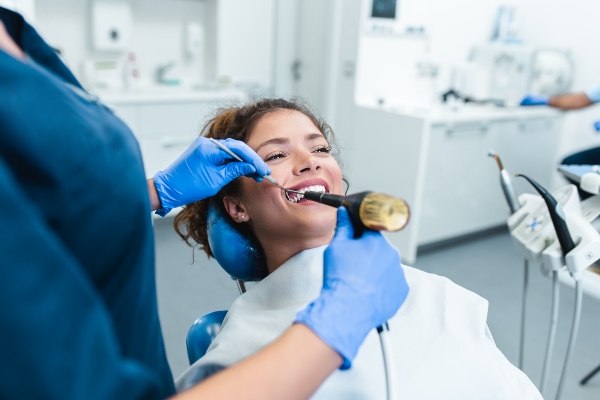What to Expect During Gum Lift Surgery in Columbus, OH

Gum lift surgery is a way to treat and correct receding gums caused by periodontal disease, age, or other causes. Calling the procedure surgery almost seems like an exaggeration, seeing as there are no scalpels used in this procedure. Periodontists prefer this method over other treatments because it is fast, painless and yields good results.
The traditional alternative to gum lift surgery is known as gum grafting. As the name suggests, gum grafting involves surgically grafting donor tissue taken from someplace else (on the person’s body) and placed onto the receding gums. The procedure is lengthy, risky and painful, with a recovery time of many weeks. That is why a person should find a periodontist who is skilled in gum lift surgery. Such a dentist will correct a patient’s receding gums without a single cut or stitch to the gums.
What happens during gum lift surgery?
- First, the dentist numbs the tooth with the receding gums. If a patient is anxious about the procedure, the dentist may also sedate the patient in order to calm them
- Next, the dentist uses a specialized needle to make a small hole in the gums
- The dentist then uses a unique tool to access the gum tissue through a gum lift. Using the tool, they loosen the tissue and pull it over the exposed base of the tooth. This, in effect, reverses the gum recession.
- To hold the gums in their new position, the dentist places a collagen strip between the gums and the newly covered base of the tooth
The collagen strip plays the dual role of holding the teeth in place and stimulating the regeneration of the gums. Doctor John Chao invented the tool used to reposition the gum tissue as well as the process. The entire process only takes a few minutes for each tooth. Which means that a periodontist can work on multiple teeth in a single session. Compare that with gum grafting, which takes 90 minutes for a pair of adjacent teeth.
Is gum lift surgery for everyone?
A person has to meet a few criteria before they can receive gum lift periodontal surgery. But broadly speaking, a person who qualifies for a gum graft is likely a good candidate for gum lift surgery. A person that is eligible for gum lift surgery should:
- Be otherwise healthy
- Have minimal to zero bone loss
- Have zero unresolved dental issues
Recovery
The recovery has to be the best part of gum lift surgery. A patient will leave the dentist’s office without any sutured incisions. They will be able to go straight back to their daily routine after leaving the dentist's office. Just like they would after getting a filling. The hole disappears in 12 to 48 hours. A person may feel a little sore or experience slight swelling, but this goes away after a few days. Aftercare is simple. A dentist will tell their patient not to brush or floss the affected area for a few days. They will ask their patient to use a prescription mouth rinse instead.
Find a skilled periodontist to perform gum lift surgery
If you want to correct your receding gums with minimum hassle, then reach out to us and make an appointment. Our qualified and experienced periodontist will have your teeth looking great in no time at all.
Let's get started…
Request an appointment here: https://www.ohiocosmeticdentists.com or call Ohio Cosmetic Dentists at (614) 503-5240 for an appointment in our Columbus office.
Check out what others are saying about our services on Yelp: Read our Yelp reviews.
Recent Posts
Are you concerned about whether or not you will receive painless dentistry at your next appointment? You aren't alone. In fact, many people every year simply avoid the dentist altogether out of fear that they will have a painful experience. Unfortunately, for some people, they have already had a negative experience, so it's even more…
For healthy teeth and gums, routine dental care is necessary. For most healthy people, two times a year is the recommended frequency for dentist appointments. This is typically adequate for deeper cleaning and preventive care. However, for some patients, more frequent appointments are necessary to manage certain issues and to prevent problems from becoming more…
Endodontics is a branch of dentistry dedicated to saving teeth by treating problems inside the tooth. It focuses on the health of the tooth's pulp and roots, essential to your smile's overall strength and function. Endodontics could be the key to relieving discomfort and preserving your natural teeth if you are experiencing tooth pain or…
Maintaining routine dental care is important for oral and overall health, but many patients have questions about what it consists of beyond daily brushing and flossing. The right answers can help patients of any age understand the importance of providing optimum care for their teeth and the possible issues if they fail to follow through.…


